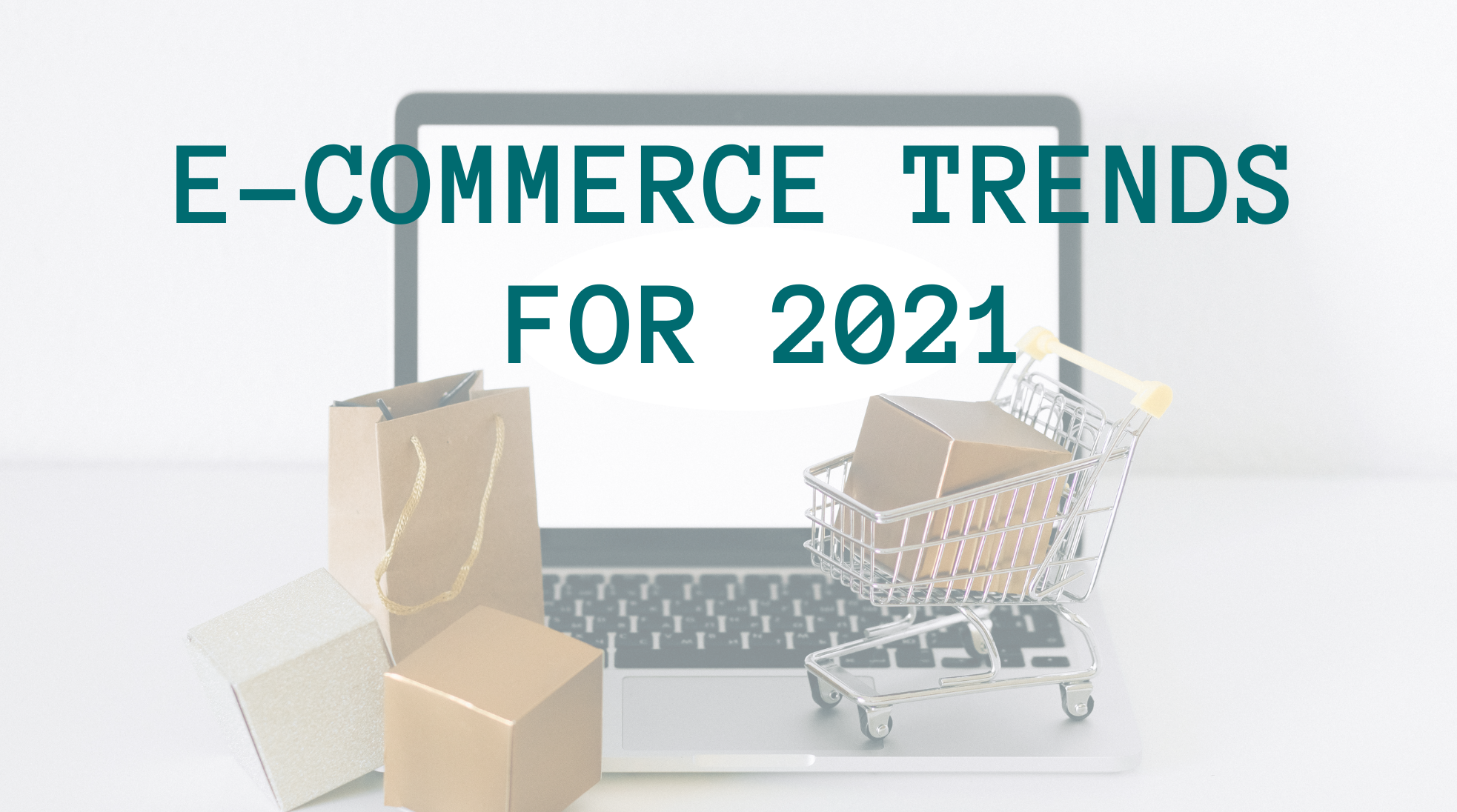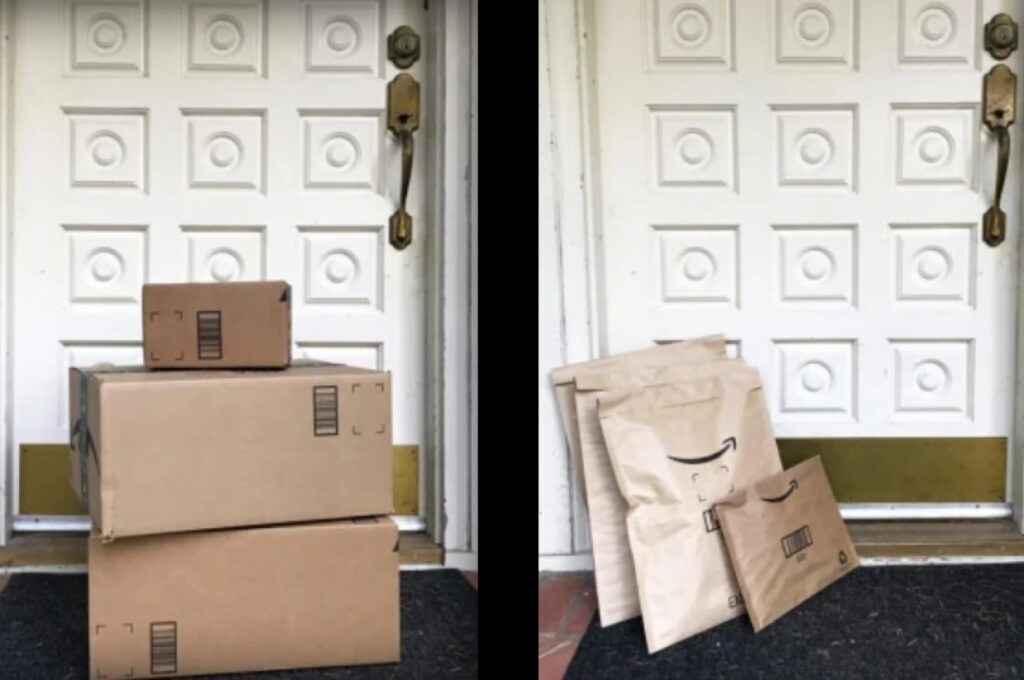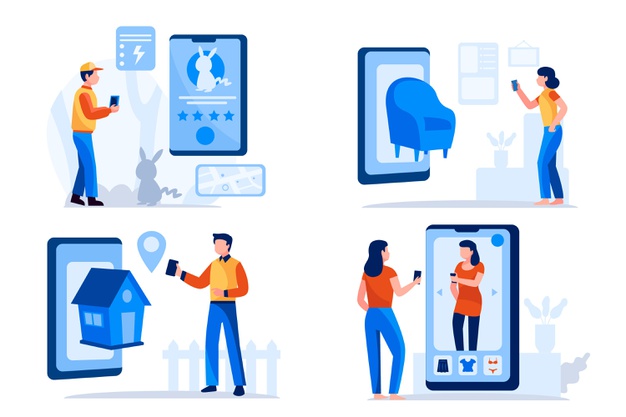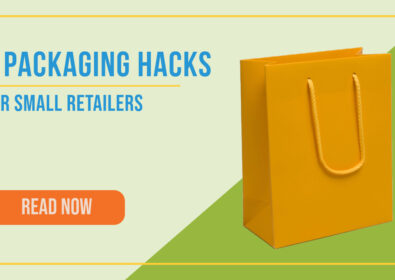By Splash Packaging TeamPackaging Resources, Retail, Sustainability in the Packaging Industry
Delivering Success: E-Commerce Trends for 2021
E-commerce had a wild ride in 2020, when online retail suddenly became a necessity in the face of store closures and stay at home orders. Has there ever before been such a scramble for consumers to find toilet paper online because all of the store shelves were empty?
The question we can ask now is, will the events of 2020 have an impact on the way we do e-commerce forever? In 2021 we will find out how the trends of online retail have been permanently changed in light of the pandemic.
Waste-Reduced Packaging
65% of consumers say they want to buy products from purpose-driven brands that advocate sustainability.
Consumers continue to care more about sustainability issues year after year, and the trend of eco-conscious consumerism is here to stay. E-commerce is not a very sustainable practice when you account for all of the packaging materials and logistics required. As such, the sustainability of e-commerce will need to be continually improved. Part of this will involve reducing waste, using smarter and more eco-friendly packaging materials, and encouraging larger orders rather than many small separate orders. Amazon is a major player that has announced their commitment to sustainability by pledging net zero carbon by 2040. They also vowed to improve their packaging and reduce packaging waste going forward.
Sustainable and recyclable e-commerce packaging will be an important aspect of online retail going forward. Packaging like paper mailing bags that are fully recyclable are a big asset to reducing waste, and they take up much less space in shipping vehicles. Eco-friendly interior packing materials are an important consideration as well. Most plastic bubble cushions are not recyclable in curbside programs, which makes their recyclability impractical for the everyday consumer. Paper packaging and packing materials are much easier for consumers to recycle in their curbside bins and are also biodegradable and compostable.
We all hate getting a large box delivered with one tiny item inside, knowing how wasteful it is. However, major companies will need to transform their warehousing and procedures in order to fix this problem. Many companies do what is most efficient for quick delivery rather than thinking about the potential packaging waste. Fixing this issue will require support and participation from consumers in understanding that a less wasteful e-commerce system will sometimes mean waiting longer to receive shipments.
The Rise of Online Grocery Shopping
Online grocery services like Amazon Fresh, Instacart, and subscription meal kits like HelloFresh were already a growing trend pre-pandemic. However, Covid-19 turned these businesses into a necessity for some high-risk people who suddenly couldn’t go grocery shopping like normal. As a result, online grocery sales skyrocketed in March 2020 when the first stay at home orders were issued. Food and grocery e-commerce allows anyone to access fresh, healthy food without needing to go to the store. It’s importance during the pandemic has been crucial for vulnerable populations.
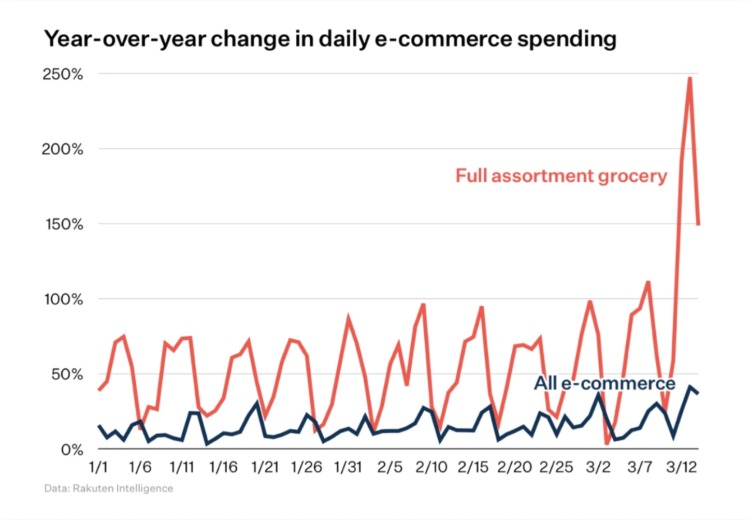
Many consumers were first introduced to online grocery shopping during the pandemic and will continue to use it onward because of the convenience and cost-savings it may provide them. The percentage of online grocery shoppers increased from 13% to 68% in the last year and 81% of people surveyed said they will continue to buy groceries online post-pandemic. So we can assume the trend of online grocery shopping is here to stay.
One downside to fresh food and grocery delivery is the packaging and shipping costs associated. While some companies like Instacart use contract shoppers to deliver items directly from the store, other companies use a warehouse source and pack foods fresh or frozen with ice packs for shipping. Anyone who has ordered meal kits or fresh groceries and meats online knows that you end up with packs of gel-ice and large cardboard boxes with tons of filler packing materials. Luckily the cardboard boxes and paper are easily recyclable, but most plastics involved are not as easy to recycle and are not biodegradable. Circling back to waste-reduced packaging, online food and grocery retailers will need to keep sustainability at the front of their philosophy to gain the support of more eco-conscious consumers.
Click and Collect & Curbside Pickup
Another e-commerce trend that started long before 2020, online shopping with in-store pickup has been a great convenience feature for busy consumers who don’t want to spend time walking around an entire store to get what they need. As people get busier and have less time to browse and shop, services like click and collect become a lot more attractive. The transition for some retailers to contactless curbside pickup amid the pandemic was smooth as they already had these systems in place. Other businesses had to quickly adapt to provide these services in order to keep up with the competition.
85% of Shoppers Have Increased Curbside Pick-Up Since COVID-19 began, and 79% Say Contactless Store Pickup is Very Important to Them.
Some retail companies, like Target and World Market, also give special discounts and offers to customers who order online for in-store or curbside pickup. They want to incentivize people to utilize the pick-up option rather than ordering to-the-door delivery because the company often takes the burden of those shipping costs.
“The ease, value, and convenience of click and collect will prove to be a sticking point for consumers and a trend that will persist long after the pandemic ends,” Says Cindy Liu, marketing analyst.
Virtual Styling & Consulting
With Covid-19 affecting consumers’ ability to go try on clothing or consult with an expert in person, companies have had to adapt their services to online platforms. Some websites now offer consultations, personalization quizzes, and unique styling services completely online. Technology has allowed for great strides in virtual consulting, using photo uploads, video chat, and even Augmented Reality and Virtual Reality to provide a better customer experience. Using AR technology, shoppers can view how a piece of furniture would look in their home directly through their phone camera. With VR, shoppers can transport themselves somewhere new and experience everything with visual accuracy as if they were really there.
The use of AI to aid in these virtual services is extremely valuable when the in-person experience is not available. Chatbots and auto-response systems can be a great aid to smaller businesses that don’t have customer service manpower. That is also why quizzes can be a great asset to helping customers find what they need. An auto-response system can give the customer the personalization they want and can possibly eliminate the need for them to speak with a customer service representative directly.
Expanding Ways to Shop Online
Social media platforms are recognizing the value of offering their users a direct way to shop on their app. An easy to use ‘shop now’ feature has been added to many social media apps recently, including Instagram and Tik-Tok.
Instagram released their ‘Instagram Shop’ feature to allow their users to easily shop from a company’s Instagram profile page. It includes a shopping feed where users can see recommended shops and items for them based on their interests. This is a great opportunity for small businesses to gain support on social media and increase their sales. Not every small business can manage a complete website on their own, so Instagram shopping is a platform where they can post their items for sale with less hassle, time commitment, and struggle.
Tik-Tok is one of the newer social media apps to take off in popularity. Shopify partnered with Tik-Tok to allow shoppable video ads to be placed in user’s feeds. Making it easier for businesses to reach their target markets, gain their attention, and increase sales. This is a great option for businesses who are targeting younger shoppers, and are selling items that are trendy or show well in video ads.

Along with Covid – technology, sustainability, and convenience are the major drivers for these e-commerce trends, and will continue to be important factors in the future. It’s clear that the pandemic has changed the way consumers behave and that will have lasting impact on e-commerce and retail as a whole. Packaging remains one of the top considerations for e-commerce businesses for an increasingly eco-conscious consumer base.

